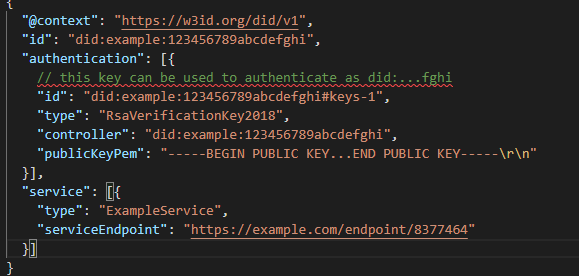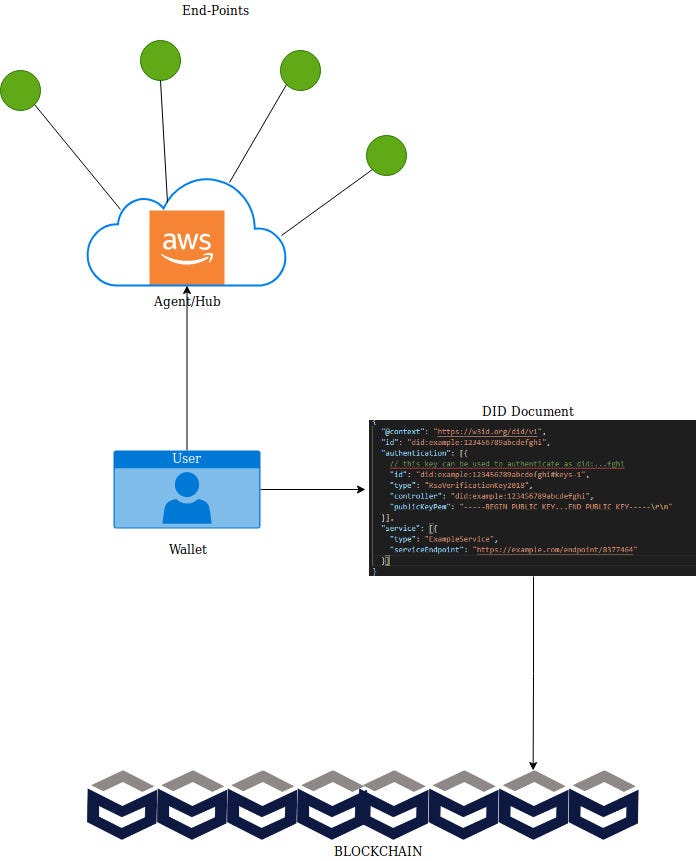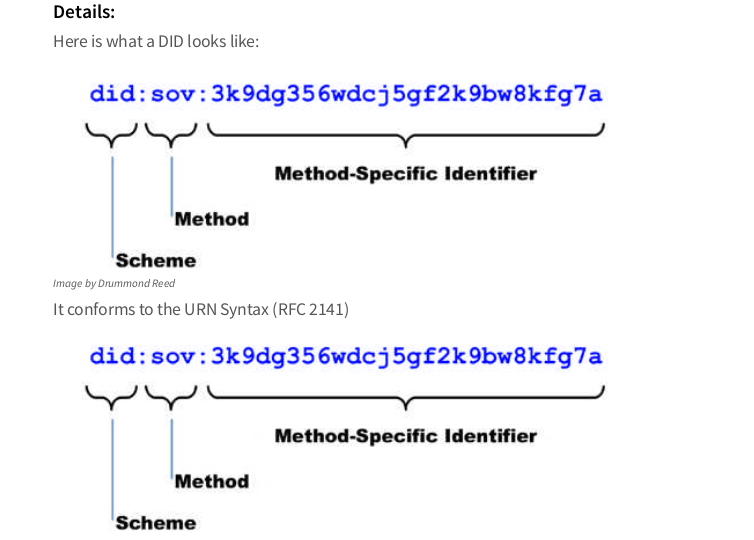Latest news about Bitcoin and all cryptocurrencies. Your daily crypto news habit.
Decentralized identifiers — An in-depth Explanation
what is DID ?
DID is called decentralized identifiers
How it is used ?
Users can create their DID’s by registering themselves on blockchain .It is like your Social security number (SSN).Users can use these dids to identify themselves.
DID components
unique identifier + DID Document
DID Document
It contains information related to user .It doesn’t include any personal information like username ,SSN number etc.
It includes :
Time stamp : the time when it was created.
Cryptographic proof of its validity.
Cryptographic public keys , Number of ways that the DID can be used to authenticate
Service endpoints : It can contain multiple elements
Each element contains :
# URL : Url for a particular service , eg :- Driving licence issuing authority
# Service type : Say DL issuing Authority
#DID : We can Use this DID against URL to identify if this is actually issued by Driving licence issuing authority
NOTE: We can add multiple service endpoints in service section
DID Flow
Issuer : Issues Verifiable credentials (example Passport Authority)
Holder : Holds Verifiable credentials (example User)
Inspector-verifier : Request claims (example Custom department on Airport)
> Custom Department will check if the Holder is actually of 34 years old
> Issuer issues claim that , yes the person is of 34 years
what are Verifiable Claims ?
How do Inspector-verifier verifies a claim ?
IT will be done with the help of Issuer
Verifiable Claims is divided into 3 parts
Subject : Holder ( A user )
Issuer : DID issuer (passport authority)
Claim: Any statement say proving citizenship of a person or proving firstname , lastname of a person .
So a Verifiable Claim is when some Issuer makes a Claim about a Subject. The “verifiable” part is that it is trustworthy and tamperproof because it has been cryptographically signed by the issuer.
— — — — — — — — — — — — — — END — — — — — — — — — — — — — — —
contact : sethi.shivam27@gmail.com
Decentralized identifiers in-depth explanation was originally published in Hacker Noon on Medium, where people are continuing the conversation by highlighting and responding to this story.
Disclaimer
The views and opinions expressed in this article are solely those of the authors and do not reflect the views of Bitcoin Insider. Every investment and trading move involves risk - this is especially true for cryptocurrencies given their volatility. We strongly advise our readers to conduct their own research when making a decision.



